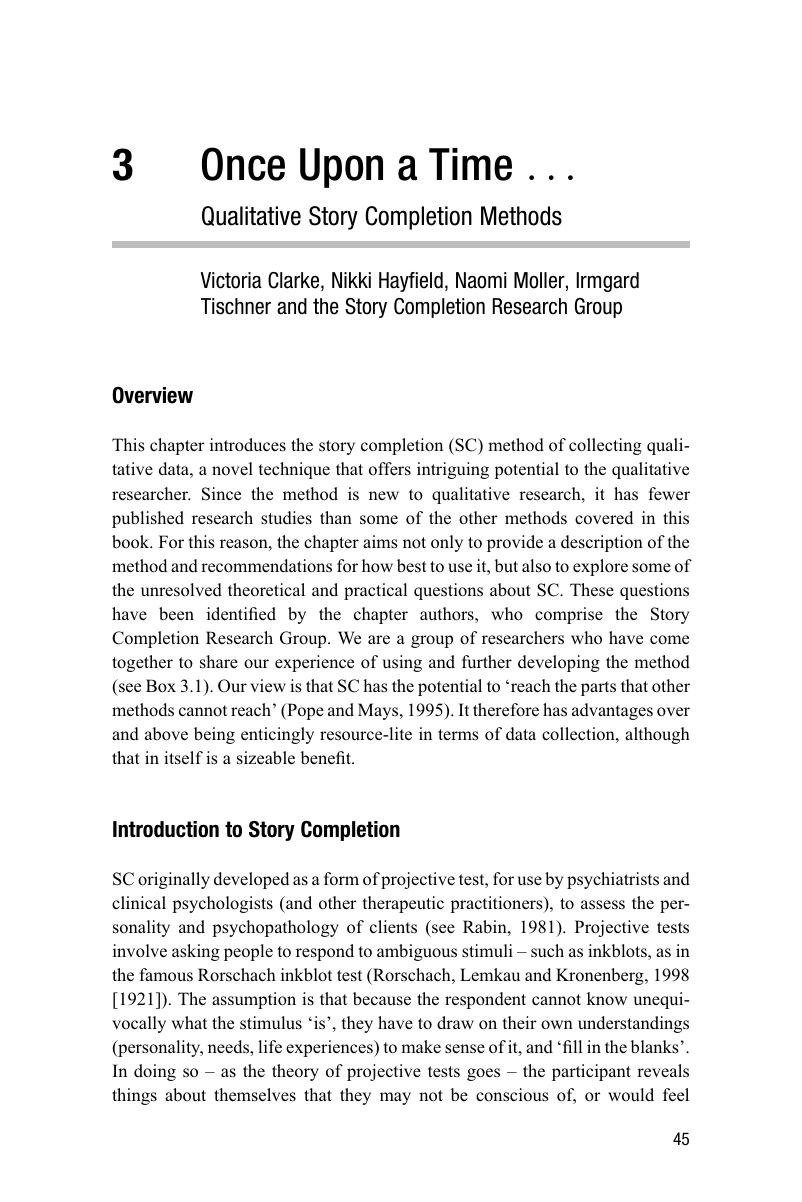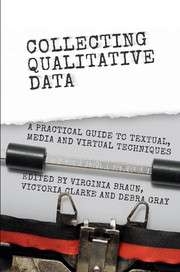Book contents
- Collecting Qualitative Data
- Collecting Qualitative Data
- Copyright page
- Contents
- Figures, Tables and Boxes
- Acknowledgements
- Contributors
- Foreword
- 1 Collecting Textual, Media and Virtual Data in Qualitative Research
- Part I Textual Data Collection
- 2 Short but Often Sweet
- 3 Once Upon a Time …
- 4 Hypothetically Speaking
- 5 ‘Coughing Everything Out’
- Part II Media Data Collection
- Part III Virtual Data Collection
- Afterword
- Glossary
- Index
- References
3 - Once Upon a Time …
Qualitative Story Completion Methods
from Part I - Textual Data Collection
Published online by Cambridge University Press: 06 October 2017
- Collecting Qualitative Data
- Collecting Qualitative Data
- Copyright page
- Contents
- Figures, Tables and Boxes
- Acknowledgements
- Contributors
- Foreword
- 1 Collecting Textual, Media and Virtual Data in Qualitative Research
- Part I Textual Data Collection
- 2 Short but Often Sweet
- 3 Once Upon a Time …
- 4 Hypothetically Speaking
- 5 ‘Coughing Everything Out’
- Part II Media Data Collection
- Part III Virtual Data Collection
- Afterword
- Glossary
- Index
- References
Summary

Information
- Type
- Chapter
- Information
- Collecting Qualitative DataA Practical Guide to Textual, Media and Virtual Techniques, pp. 15 - 44Publisher: Cambridge University PressPrint publication year: 2017
References
Further Resources: Online
The companion website for Braun and Clarke’s (2013) book Successful qualitative research: A practical guide for beginners provides examples of SC research materials and a ‘perceptions of a parent coming out as transgendered’ SC datset to practice coding and analysis with: www.uk.sagepub.com/braunandclarke
Further Resources: Readings
References
Accessibility standard: Unknown
Why this information is here
This section outlines the accessibility features of this content - including support for screen readers, full keyboard navigation and high-contrast display options. This may not be relevant for you.Accessibility Information
- 44
- Cited by
